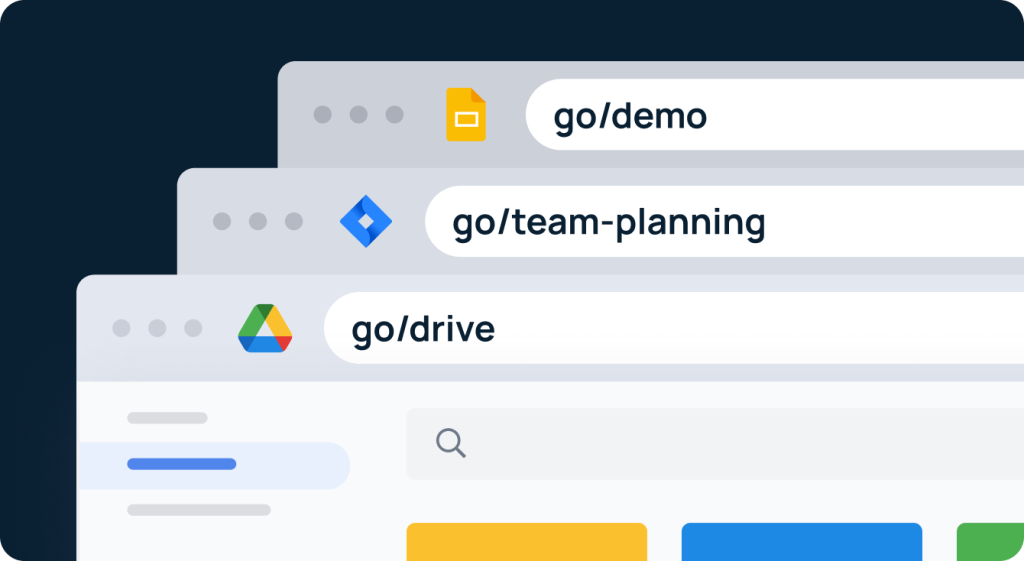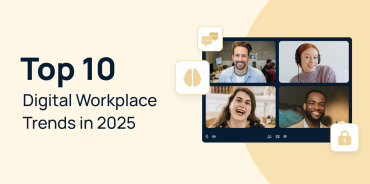Employee productivity is key for organizational success.
When your employees are productive — getting their work done quickly, efficiently, and well — your company growth and revenue will go up.
Workplace productivity statistics are a helpful way to gauge global productivity levels and trends, gaining insight you can use to make smarter decisions and improve your own employees’ efficiency.
Take a look at these 20 key employee productivity stats for 2025. Plus, stay tuned for our top picks on digital tools that will increase team productivity.

Employee productivity stats for 2025
#1. Worker productivity and accuracy decrease in the afternoon hours as well as later in the week. For example, the average number of total words typed was 427 on Monday, with a decline of over 19% by Friday. — PLOS ONE
#2. Office workers are 13% more productive when they’re happy. — SSRN
#3. Working from home leads to a 13% performance increase. — Stanford School of Business
#4. A 1% increase in employee lateness and absenteeism is associated with a 2.3% decline in productivity and daily sales. — Harvard Business School
#5. The average employee spends 31 hours in unproductive meetings each month. — Atlassian
#6. Workplace distractions make 50% of employees feel significantly less productive. — Udemy
#7. 66% of employees would be more productive when working if they got more sleep. — Glassdoor
#8. 95% of companies trialing a four-day workweek say productivity rates have either stayed the same or improved. — The Guardian
#9. 55% of 18- to 34-year-olds who were offered the option to work fully remote say mental health issues impact their ability to perform effectively. — McKinsey
#10. 85% of leaders say that the shift to hybrid work has made it challenging to have confidence that employees are being productive. — Microsoft
#11. 78% of employers use monitoring software to track employee performance, productivity, and online activity. (However, 83% of employers are concerned about whether this is ethical.) — ExpressVPN
#12. Returning U.S. productivity to its long-term trend of 2.2% annual growth would add $10 trillion in cumulative GDP over the next ten years. — McKinsey
#13. 35% of high achievers feel most energized between 8:00 a.m. and 10:00 a.m. — Full Focus Co.
#14. In 2022, labor productivity increased in 15 of 30 selected service-providing industries. — U.S. Bureau of Labor Statistics
#15. The average worker spends two work hours each day recovering and re-focusing from distractions. — Atlassian
#16. 91% of workers say they get more done when working remotely. — Psychology Today
#17. In 2022, employees reported working at only 60% of their potential productivity capacity. — Lakeside Software
#18. 68% of high-growth organizations have enabled productivity-anywhere workforce models. — Accenture
#19. Out of workers with jobs that can be done from home who are choosing to go into their workplace, 61% say a major reason why is because they have increased productivity at their workplace. — Pew Research
#20. Individual productivity is forecast to increase by 12% in the UK, 11% in Canada and Germany, and 10% in France and the U.S. — DocuSign
Trends and insights from 2020-2023
In the wake of the COVID-19 pandemic, which turned millions of office workers into remote employees instead, productivity has changed. Trends have emerged in employee productivity stats, including:
- Overall productivity is on the rise. In the U.S., employee productivity research indicates that productivity saw an increase in 2021, a dip in 2022, and is trending upward again in 2023.
- Most employees are more productive when working remotely. While this isn’t necessarily true across the board — distractions and the lack of engagement and connection cause some employees to actually prefer in-office work — most statistics indicate that workers are just as productive, if not more so, when sent home to complete their work.
- Meetings and communication obstacles are a barrier to productivity. With remote work comes additional meetings and different communication, both of which bar employees from getting done the work they actually need to get done.

Unique employee productivity tools
Digital tools and products are a great method of improving productivity and creating more engaged employees. Some of our favorite top employee productivity tools for 2025 include:
- GoLinks — Create short links to help with faster knowledge discovery and file sharing. (Learn more about GoLinks for employee productivity in the section below.)
- Notion — This project management tool lets you keep projects, people, and planning in a centralized location.
- Slack — Connect your remote and hybrid teams by integrating this messaging platform with your other digital tools.
- Pomofocus — Especially helpful for remote workers, Pomofocus is a timer for Pomodoro-style work blocks.
- Gather — This virtual HQ lets you create office spaces for your team, facilitating the more natural conversations you’d have in a real office. This allows you to collaborate in real-time and ultimately finish projects faster.
- BrainFM — Here’s one you might not have heard of before! Use BrainFM’s wide selection of music to enhance focus.
- GoSearch — AI-powered enterprise search lets you search across your entire SaaS stack to surface internal resources and generate intelligent answers. This puts company-wide knowledge at your fingertips.
GoLinks: Revolutionizing employee productivity
GoLinks is a powerful employee productivity product that can streamline workflows and improve efficiency. You’ll create short links, called go links, that are easier to manage and share than long, clunky URLs. GoLinks can help your team:
- Communicate more efficiently
- Quickly access and share knowledge or resources
- Stay secure while using short links in the office, from home, or on the go

GoLinks productivity stats

GoLinks users are able to save significant amounts of time in their workday by creating and referencing short links. Paul from Salesloft, for example, saves 30 minutes per day. By implementing go links, he no longer wastes time looking for resources. Now, he can go back and forth between links from directly within his browser.

Another example is CoachHub. This digital coaching platform was struggling with internal content discoverability. So the company turned to GoLinks, creating short links for important resources and adding the links to meeting slides. In just one year, the CoachHub team saved 900 hours of productivity time!
Improve productivity and workflows with GoLinks
If you were to mine your analytics for employee productivity stats from your own organization, what would those stats look like? Make sure they’re up to par by using GoLinks to enhance your workflows. Try GoLinks for free today.
Access and share resources instantly with GoLinks
Try for free














